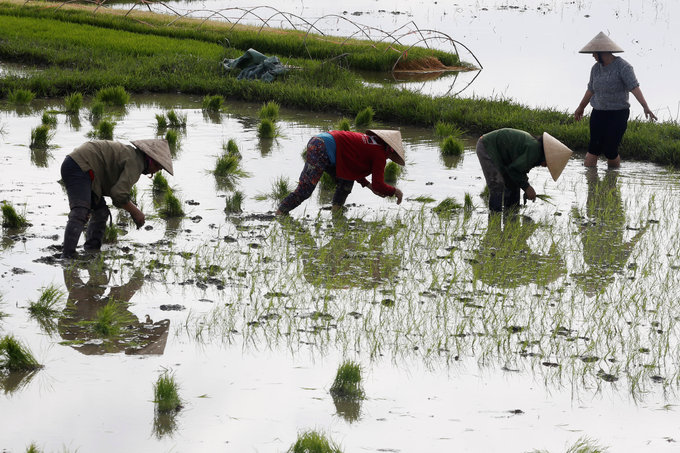Vietnam can cut emissions, save $2.3 bln with efficient agriculture, forestry
Tue, 28 May 2019 18:09:00 | Print | Email Share:

Vietnam can reduce its greenhouse gas emissions and save $2.3 billion by 2030 with more efficient land use practices, a new study found.
The study by the International Center for Tropical Agriculture (CIAT), published by academic journal publisher Frontiers last month, said Vietnam can cut greenhouse emissions through different mitigation measures.
It identifies 41 mitigation measures to reduce emissions in the agriculture, forestry and land use sector in Vietnam. 14 of them, including agroforestry, intermittent watering and better management of livestock diets, could have a "negative marginal cost," meaning they would cost less than business-as-usual practices through increasing productivity or reducing inputs such as fertilizer or water. Other measures such as rainforest and mangrove restoration and protection, while having higher marginal costs, also have higher mitigation potential.
If all 41 measures are taken, 51 percent of Vietnam’s projected emissions in 2030 could be eliminated, the study says.
"This shows that feasible changes in land use and agriculture have tremendous potential for Vietnam to mitigate its greenhouse gas emissions," said Godefroy Grosjean, head of CIAT’s Asia Climate Policy Hub and a co-author of the study, "Reviewing Vietnam's Nationally Determined Contribution: A New Perspective Using the Marginal Cost of Abatement."
"This study could be replicated in other Southeast Asian countries to guide their nationally determined contribution (NDC) targeting," he said, referring to goals set by countries to reduce global emissions of greenhouse gases in accordance with the 2015 Paris Agreement.
The study’s researchers however stressed that more research and data could help Vietnam refine its own NDC, which could be more ambitious in helping reduce global greenhouse emissions even further. The same is true for other countries, particularly developing ones, where data scarcity is more pronounced.
"Vietnam's NDCs have important challenges ahead. Reviewing some of the assumptions underlying the country's emissions projections is important to achieving consistency with their mitigation options, and improving the likelihood of effective climate policy," said Daniel Escobar Carbonari, a researcher at Stockholm University and Colombia's Ecotonos Foundation.
"Scaling up mitigation practices will be a challenge given the size of certain agricultural subsectors. Vietnam is the world's second-largest producer of coffee and fifth largest of rice, by volume. Climate change and increasing domestic demand for food and animal products may also put pressure on natural landscapes," he said.
Vietnam is ranked third highest in terms of total greenhouse gas emissions in Southeast Asia, after Indonesia and Thailand.
In agricultural emissions, Vietnam currently ranks fourth in the region behind Indonesia, Thailand, and Myanmar, but in the forest and land use sectors, both Malaysia and the Philippines have greater fluxes of emission than Vietnam, according to the study.
The country is also one of the top five most adversely affected by climate change, according to Vietnam’s Institute of Strategy and Policy.
A study published last September in the Climatic Change journal said that Southeast Asian nations like the Philippines and Vietnam, along with countries in Southern Europe and South America, would be most affected by heat-related mortality, which is exacerbated by global warming.
Over the last 50 years, Vietnam’s average annual surface temperature has increased by approximately 0.5 -0.7 degree Celsius, while the sea level has risen by approximately 20 centimeters.
The United Nations has warned that if sea levels rise by one meter, Vietnam will face a loss of $17 billion each year, with one fifth of its population or some 18 million becoming homeless and 12.3 percent of farmland disappearing.
The agriculture, forestry and land use sector emitted approximately 24 percent of global anthropogenic greenhouse gas emissions in 2010 and often contributes a substantial share of national emissions in developing countries, according to a 2014 report on climate change by the Cambridge University Press.
By: Phan Anh/VnExpress
---------------------------------------------
Same category News :













